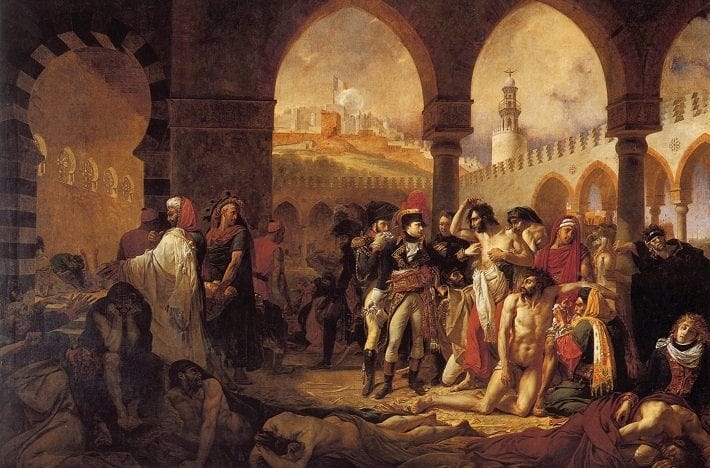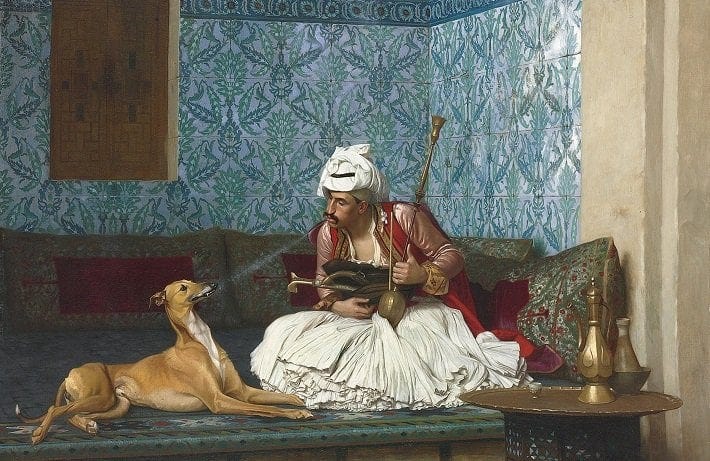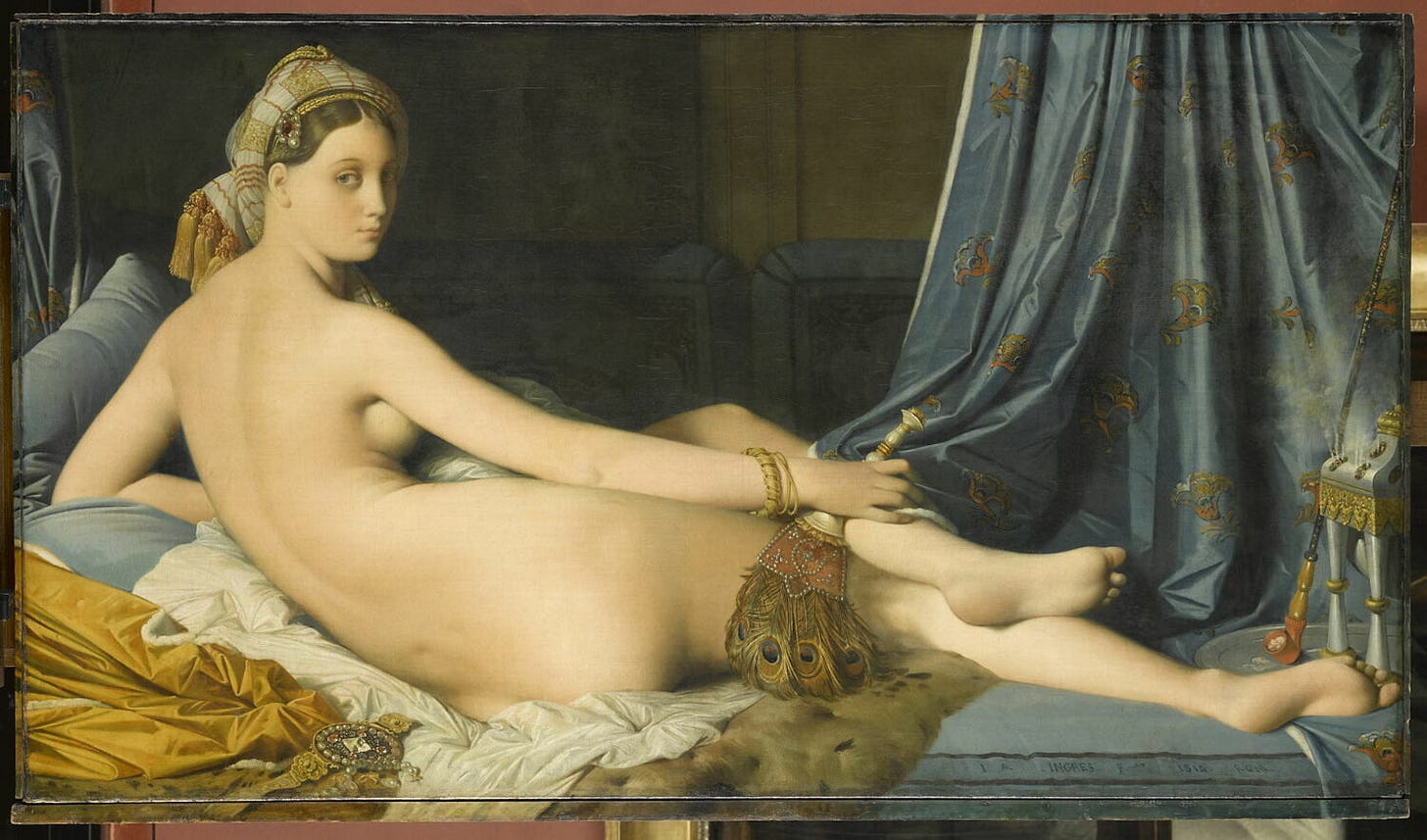Orientalism : Narratives of Imperial Power
Although the vacation season is currently winding down, my thoughts drift to warm and unfamiliar destinations (I need a vacation).
Travel is a powerful catalyst for cultural discovery as it prompts reflections on newness, foreignness, and our perceptions of the "other." Our instinct to link the "new" with the "different" highlights a key aspect of the human experience. We often compartmentalize our understanding of diverse cultures, viewing what is unfamiliar as the "other." It's crucial to note that this term isn't used negatively; instead, it serves as a framework for examining the complexities of perception and bias.
This concept of the “other” was at the heart of 19th-century Orientalist thinkers as they encountered and "rediscovered" Eastern cultures. Prior to this, European contact with the East—encompassing Arab, Indian, Chinese, and other civilizations—was largely limited to trade and a few military campaigns. Orientalism emerged as a Western scholarly discipline focused on foreign literature, philosophy, history, and art. Yet, it was inevitably filtered through the biased lenses of Western tradition.
Scholar Edward Said, who wrote extensively on the topic, argues that Orientalism is primarily a constructed image of the East, tailored for a Western audience. He shifts the focus from merely observing the Orient to examining how the West created its own unique perception of the East. This view highlights the binary relationship between these regions, where the West is considered "normative" and the East is seen as "other". While this perspective may seem subjective, it reveals valuable insights into how European imperialists viewed and understood different cultures in the 19th century.
Bonaparte Visiting the Plague Victims of Jaffa, Antoine-Jean Gros (1840)
European Imperialism as the Root of Orientalism
Before exploring the artistic trends of the Orientalist movement, it’s important to understand the historical context that shaped this perspective. Orientalist thought emerged during the 19th century amid rampant imperialism. Key events, such as Napoleon’s expedition to Egypt and Algiers, British domination of India through the East India Company, the division of China into European spheres of influence, and the eventual partition of Africa between European powers set the stage.
At this time, European hubris reached its peak, with leaders from France, Britain, Spain, Portugal, and Belgium believing they had the right to claim and divide the world for their empires. This mindset fostered a sense of ownership and superiority over foreign cultures, as Western Europeans asserted control over distant lands and the people who lived there. Understanding this backdrop is crucial for grasping the complexities of the Orientalist movement.
Map of European Colonial Empires in the Late 19th Century
An Imperial Ideology
Empires didn’t just conquer militarily; they also sought ideological dominance. Orientalism produced beautiful visuals, but ultimately culminated into a narrative of power, superiority, and control. Western European empires were set on understanding the “other” mostly to facilitate conquest and control. As a result, orientalist narratives, whether in literature, art or poetry, were oversimplifying complex Eastern cultures and emphasized their “otherness”. This tendency to use broad categories to explain what is different has persisted throughout history. However, Orientalism formalized this process, presenting itself as objective knowledge.
In his treatise on orientalism, Edward Said critiques the exoticism found in Orientalist art, highlighting how Western European artists often portrayed the East in romanticized and stereotypical ways. These depictions reinforced problematic power dynamics. Many works included sexually suggestive scenes and cultural tropes that further emphasized Western superiority, reducing Eastern cultures to mere objects for Western fascination and consumption.
Une plaisanterie, Jean-Léon Gérôme (1882)
That being said, imperialism did facilitate international travel, trade and an increase in cultural exchanges. The conquest and increased control of the East opened new avenues for European artists and thinkers, allowing for easier travel and direct engagement with local traditions. While many artists relied on published travel logs for their impressions, artists like Jean-Léon Gérôme, Eugene Delacroix and Théodore Chassériau, embarked on journeys to the region to experience the East firsthand. These travels enriched their artistic repertoire with a wealth of "exotic" imagery that inspired their works.
The “Other” Illustrated
Orientalist paintings are a testament to the Western fascination with the East, portraying it as an exotic and mysterious land brimming with sensuality, mysticism and opulence. These artworks simultaneously celebrated the beauty of Eastern societies while reinforcing colonial power dynamics and stereotypes. By blending fantasy with simplified historical narratives, they created an alluring yet distorted vision of a complex world, inviting viewers to explore the enchanting “other” while overlooking the realities of life in the East.
Some of the most popular and influential Orientalist genre scenes center around harems - opulent interiors filled with nude or exotically adorned female slaves or concubines. These highly sexualized narratives thrived in these “foreign” scenes, allowing Western viewers to engage with them without the usual moral repercussions imposed by European standards. As a result, Orientalism reinforced a range of stereotypes about Eastern cultures, particularly regarding their perceived lack of "civilized" behavior and differing moral standards.
For instance, in Ingres’ Grande Odalisque, a daring - nude - woman gazes directly at the viewer, surrounded by a exotic elements such as a peacock feather fan, a colorful turban, and a hashish pipe. This scene invites the intended European audience to experience the harem. Such an erotic invitation is only made possible by the exotic and foreign setting that renders it acceptable within the context of the East and the “other”. In other words, Ingres would not have dared to make the same depiction of a European woman in her European home as it would have offended local morality
Grande Odalisque, Jean-Léon Gérôme (1814)
The perceived uncivilized barbarism and sexuality of the East is even more flagrant in Gérôme’s The Snake Charmer. Here, the scene depicts a nude child and invites the intended European viewer to make a moralistic judgment of the men watching the performance. This reinforced stereotypes regarding the perceived difference in morality and acceptable sexual practices between East and West.
The Snake Charmer, Jean-Léon Gérôme (1879)
Another prominent theme in Orientalist painting is depictions of foreign soldiers. This particular example represents a Bashi-Bazouk - or a type of foreign fighter known for its brutality and lack of formal military discipline. who fought alongside the Ottoman Empire's Turkish army in pursuit of plunder. This illustration embodies a romanticized yet brutal vision of warfare.
Bashi-Bazouk, Jean-Léon Gérôme (1868-1869)
Interestingly, some Orientalist works aimed to celebrate the perceived spiritual depth and mysticism of Eastern cultures. However, this portrayed spirituality often served as a contrast to the supposedly superior rationalism of the West.
Prayer in the Mosque, Jean-Léon Gérôme (1871)
Influencing European Culture
Ironically, the cultures that Western Europeans objectified and sought to dominate significantly influenced European tastes and trends. The allure and opulence of Orientalism inspired a demand for Eastern architectural motifs, furniture, decorative arts, and textiles among the European elite. During the mid-19th century, wealthy British families often drew inspiration from Oriental interiors.
In the end, Orientalism isn't just a relic of imperialist thinking; it’s a vivid movement woven from the threads of cultural tension and exchange. It challenges all viewers to reconsider how we perceive what is “new” and “different”. The stunning visuals born from this movement still captivate viewers today as a testament of European imperialism, urging us to explore a deeper understanding of other cultures.









Amazing article!